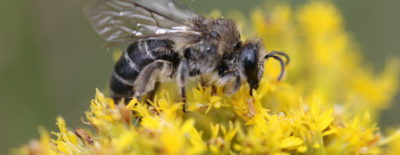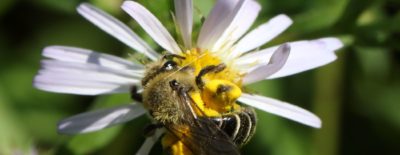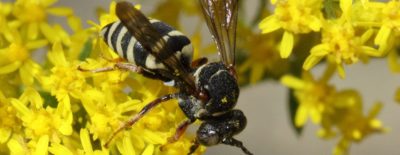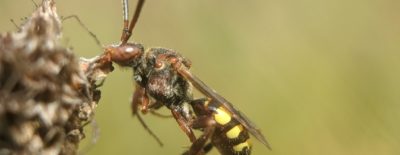Asters in the colloquial sense include several genera of fall blooming composites. At least two bee species have aster in their name and seem to be at least loosely assorted with the flower genera Doellingeria or Symphyotrichum, the later being one of the last native plants to bloom in the state.
See also the Goldenrod bee page, as there is nearly complete overlap in the species visiting these two groups of related plants.

Aster Cellophane Bee (Colletes compactus)
One of the latest species to emerge in the fall. It partially overlaps in plant preferences and phenology with the similar Spine-shouldered Cellophane Bee, but they can usually be distinguished with good photos. Image courtesy Spencer Hardy.

Aster Mining Bee (Andrena asteris)
This is a large mining bee with distinct hair bands on the abdomen and bright yellow hair on its thorax. Image courtesy Michael Veit.

Autumnal Cellophane-Cuckoo (Epeolus autumnalis)
A cleptoparasite of Aster Cellophane Bees, this bee has not been recorded frequently in VT but perhaps overlooked since it likely doesn't emerge until early September. Image courtesy Michael Veit.

Banks' Nomad Bee (Nomada banksi)
This is a cleptoparasite of Aster Mining Bees and is most likely to be found around active nests of that species. Image courtesy Spencer Hardy.






